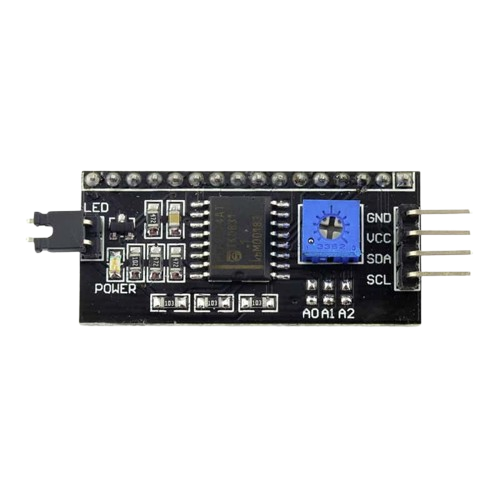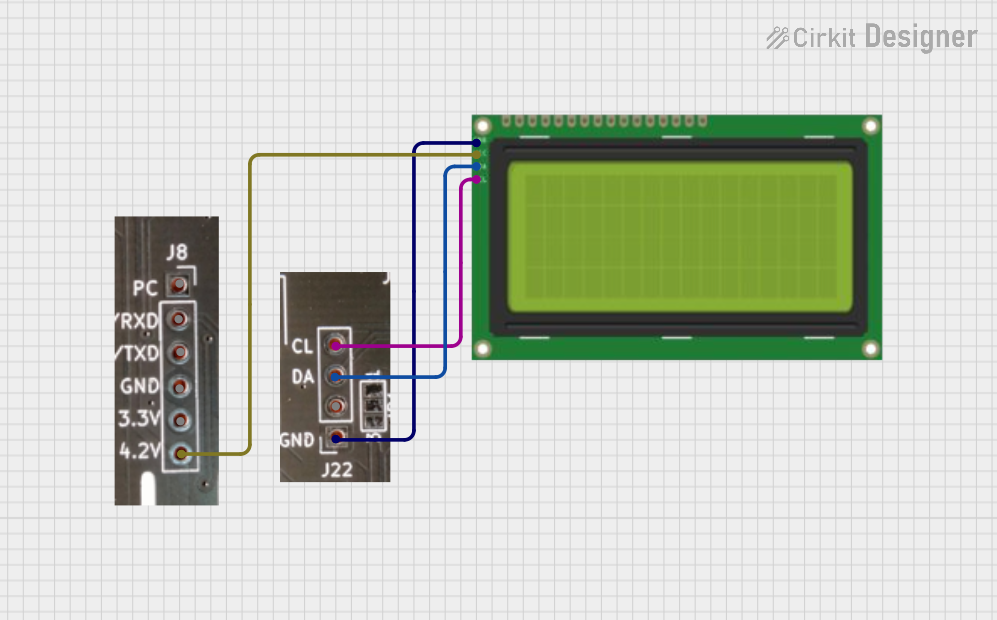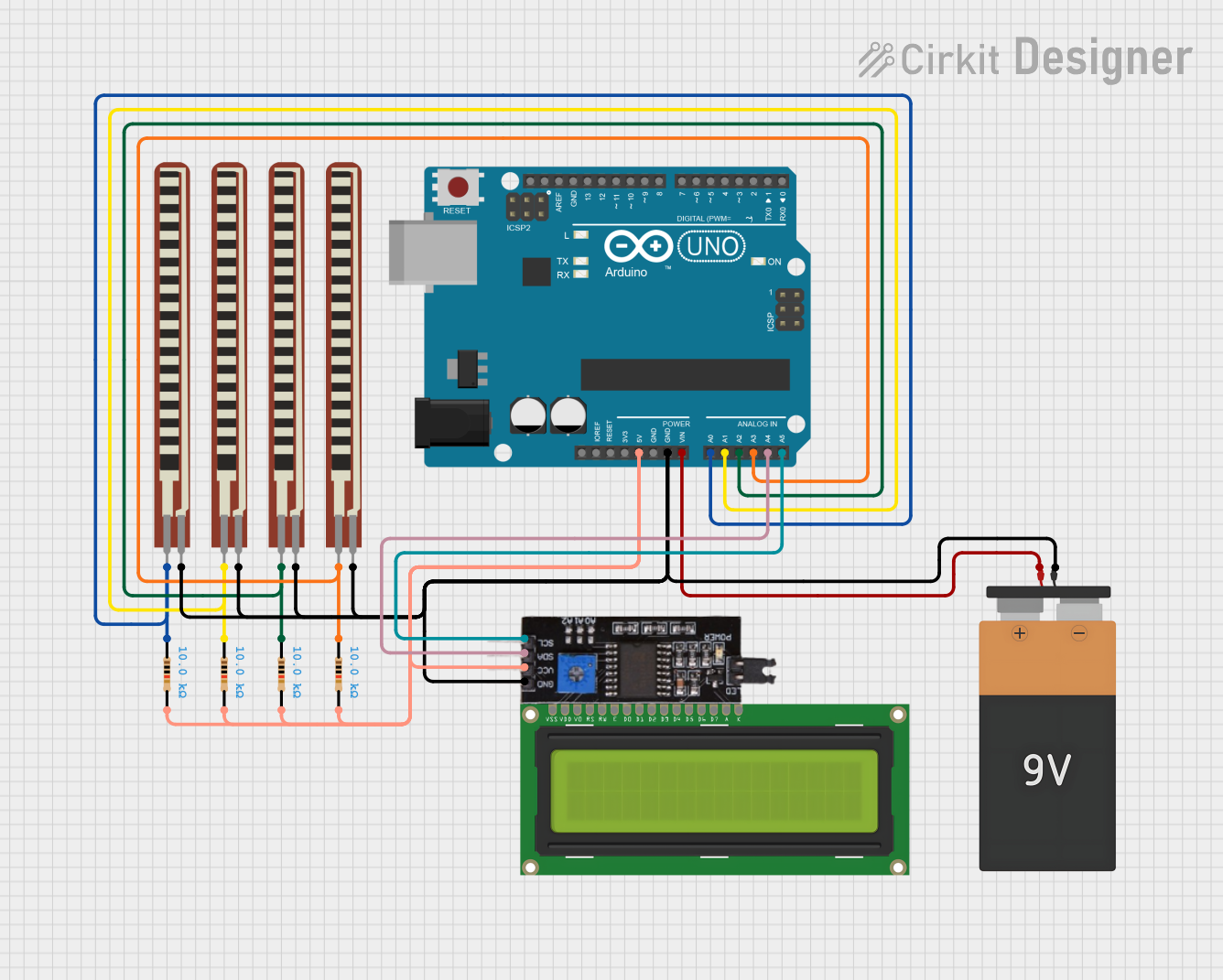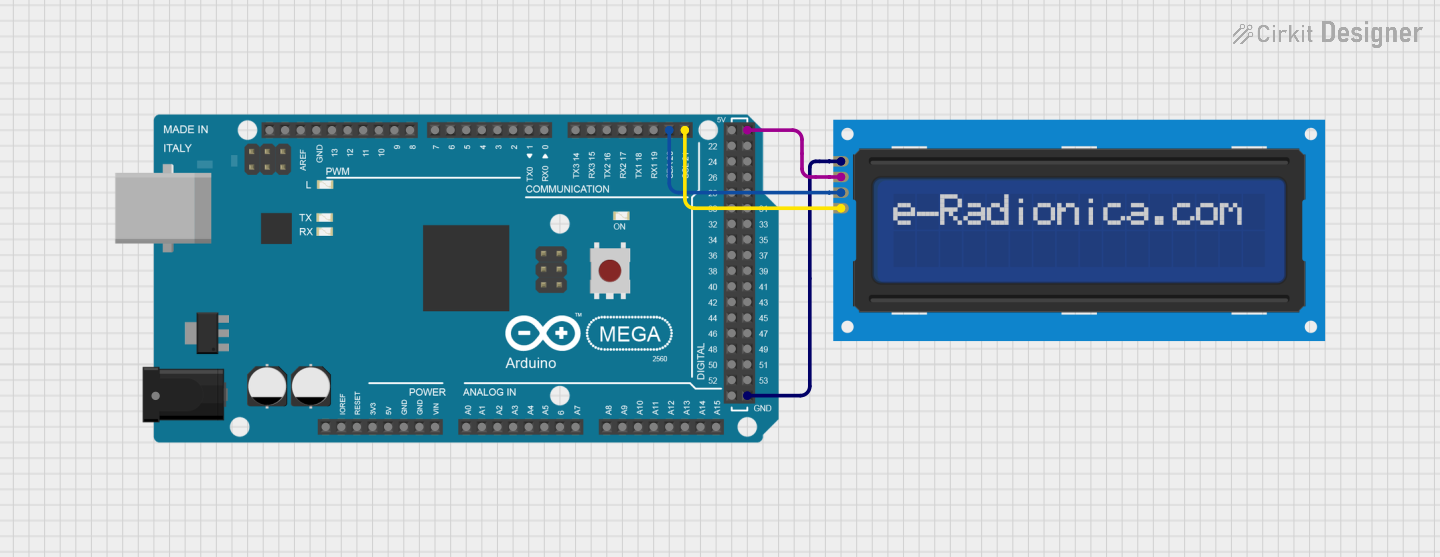
How to Use I2C: Examples, Pinouts, and Specs

 Design with I2C in Cirkit Designer
Design with I2C in Cirkit DesignerIntroduction
I2C (Inter-Integrated Circuit) is a multi-master, multi-slave, packet-switched, single-ended, serial communication bus. It is widely used in embedded systems to connect low-speed devices such as sensors, EEPROMs, real-time clocks, and microcontrollers. I2C is known for its simplicity and efficiency, requiring only two communication lines: a data line (SDA) and a clock line (SCL). This makes it ideal for applications where minimizing pin usage is critical.
Explore Projects Built with I2C

 Open Project in Cirkit Designer
Open Project in Cirkit Designer
 Open Project in Cirkit Designer
Open Project in Cirkit Designer
 Open Project in Cirkit Designer
Open Project in Cirkit Designer
 Open Project in Cirkit Designer
Open Project in Cirkit DesignerExplore Projects Built with I2C

 Open Project in Cirkit Designer
Open Project in Cirkit Designer
 Open Project in Cirkit Designer
Open Project in Cirkit Designer
 Open Project in Cirkit Designer
Open Project in Cirkit Designer
 Open Project in Cirkit Designer
Open Project in Cirkit DesignerCommon Applications and Use Cases
- Communication between microcontrollers and peripheral devices (e.g., sensors, displays)
- Reading and writing data to EEPROMs or real-time clocks
- Interfacing with ADCs/DACs in measurement systems
- Connecting multiple devices on a shared bus in embedded systems
Technical Specifications
Key Technical Details
- Communication Type: Serial, synchronous
- Number of Wires: 2 (SDA - Serial Data, SCL - Serial Clock)
- Voltage Levels: Typically 3.3V or 5V (depending on the system)
- Speed Modes:
- Standard Mode: Up to 100 kHz
- Fast Mode: Up to 400 kHz
- Fast Mode Plus: Up to 1 MHz
- High-Speed Mode: Up to 3.4 MHz
- Addressing: 7-bit or 10-bit addressing
- Pull-Up Resistors: Required on both SDA and SCL lines (typical values: 4.7 kΩ or 10 kΩ)
Pin Configuration and Descriptions
I2C does not refer to a specific physical component but rather a protocol. However, devices using I2C typically have the following pins:
| Pin Name | Description |
|---|---|
| SDA | Serial Data Line: Used for transmitting and receiving data |
| SCL | Serial Clock Line: Carries the clock signal for synchronization |
| GND | Ground: Common ground for the communication |
| VCC | Power Supply: Provides power to the device (e.g., 3.3V or 5V, depending on the system) |
Usage Instructions
How to Use I2C in a Circuit
- Connect the SDA and SCL Lines:
- Connect the SDA and SCL pins of all devices on the bus.
- Use pull-up resistors on both lines to ensure proper signal levels.
- Power the Devices:
- Ensure all devices share a common ground (GND).
- Provide the appropriate voltage (3.3V or 5V) to the VCC pin of each device.
- Assign Unique Addresses:
- Each slave device on the I2C bus must have a unique address.
- Check the datasheet of each device to configure or identify its address.
- Configure the Master Device:
- The master device (e.g., a microcontroller) initiates communication and controls the clock signal.
- Use appropriate libraries or firmware to configure the master for I2C communication.
Important Considerations and Best Practices
- Pull-Up Resistors: Ensure the SDA and SCL lines have proper pull-up resistors. Without them, the lines may not function correctly.
- Bus Length: Keep the bus length short to avoid signal degradation and interference.
- Address Conflicts: Avoid using devices with the same I2C address on the same bus. If unavoidable, consider using an I2C multiplexer.
- Clock Speed: Match the clock speed to the capabilities of all devices on the bus.
- Noise Filtering: Use decoupling capacitors near the power pins of devices to reduce noise.
Example: Using I2C with Arduino UNO
Below is an example of interfacing an I2C temperature sensor (e.g., TMP102) with an Arduino UNO:
#include <Wire.h> // Include the Wire library for I2C communication
#define TMP102_ADDRESS 0x48 // I2C address of the TMP102 sensor
void setup() {
Wire.begin(); // Initialize I2C communication
Serial.begin(9600); // Start serial communication for debugging
}
void loop() {
Wire.beginTransmission(TMP102_ADDRESS); // Start communication with TMP102
Wire.write(0x00); // Point to the temperature register
Wire.endTransmission(); // End transmission
Wire.requestFrom(TMP102_ADDRESS, 2); // Request 2 bytes of data from TMP102
if (Wire.available() == 2) { // Check if 2 bytes are available
int msb = Wire.read(); // Read the most significant byte
int lsb = Wire.read(); // Read the least significant byte
// Combine the bytes and calculate the temperature
int temperature = ((msb << 8) | lsb) >> 4;
float celsius = temperature * 0.0625; // TMP102 resolution is 0.0625°C
Serial.print("Temperature: ");
Serial.print(celsius);
Serial.println(" °C");
}
delay(1000); // Wait 1 second before the next reading
}
Troubleshooting and FAQs
Common Issues and Solutions
No Communication on the Bus:
- Cause: Missing or incorrect pull-up resistors.
- Solution: Add 4.7 kΩ or 10 kΩ pull-up resistors to the SDA and SCL lines.
Devices Not Responding:
- Cause: Address conflict or incorrect address configuration.
- Solution: Verify the I2C address of each device and ensure they are unique.
Data Corruption:
- Cause: Excessive noise or long bus length.
- Solution: Shorten the bus length and add decoupling capacitors near the devices.
Clock Stretching Issues:
- Cause: Slave device holding the clock line low for too long.
- Solution: Check the slave device's datasheet for clock stretching behavior and adjust the master device's timeout settings.
FAQs
Q: Can I connect multiple masters on the same I2C bus?
- A: Yes, I2C supports multi-master configurations, but arbitration is required to avoid conflicts.
Q: What happens if two devices have the same I2C address?
- A: Address conflicts will occur, leading to communication errors. Use an I2C multiplexer or change the address of one device if possible.
Q: How do I calculate the pull-up resistor value?
- A: The value depends on the bus capacitance and voltage. A typical value is 4.7 kΩ, but you can calculate it using the formula:
( R_{pull-up} = \frac{V_{cc}}{I_{pull-up}} ), where ( I_{pull-up} ) is the desired pull-up current (e.g., 1 mA).
- A: The value depends on the bus capacitance and voltage. A typical value is 4.7 kΩ, but you can calculate it using the formula:
Q: Can I use I2C with 3.3V and 5V devices on the same bus?
- A: Yes, but you may need a level shifter to safely interface devices with different voltage levels.
This documentation provides a comprehensive guide to understanding and using the I2C protocol effectively in your projects.